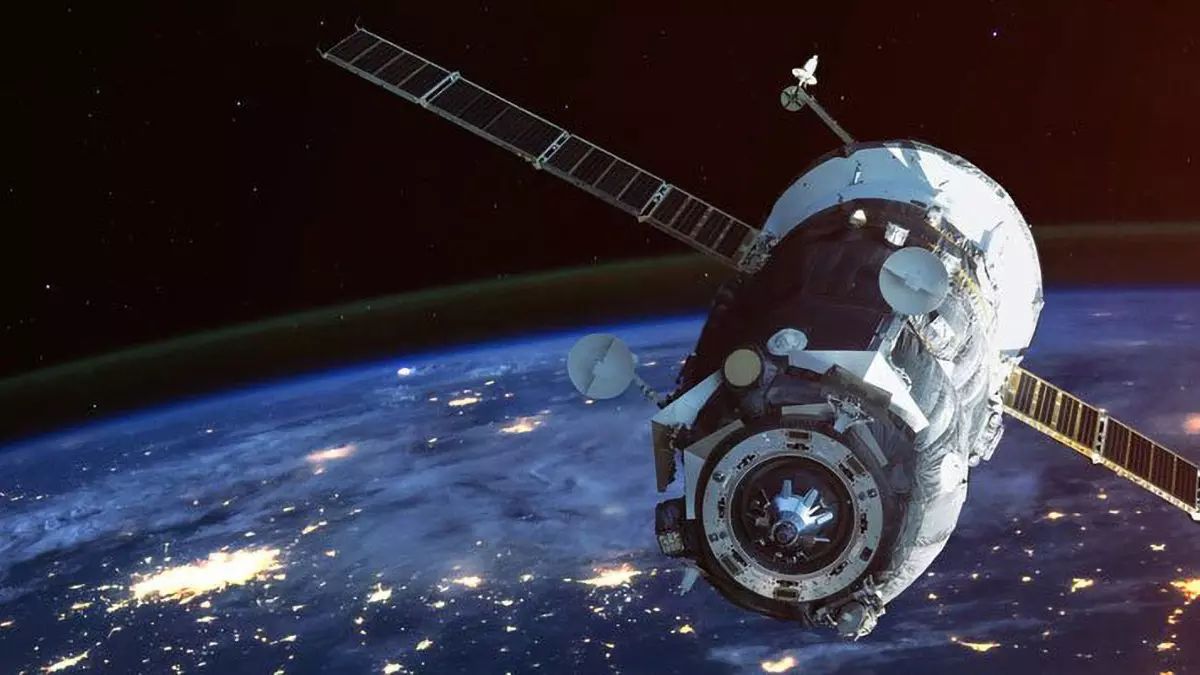A ‘space skin’ could help protect spacecraft and satellites from harsh solar radiation while also harvesting energy for future use in the craft’s mission, according to a study from the University of Surrey and Airbus Defence and Space.
The research team has shown that their innovative nano-coating, called the Multifunctional Nanobarrier Structure (MFNS), can reduce the operating temperatures of space-qualified structures from 120°C to 60°C.
Thanks to its custom-built, room temperature application system, researchers were able to show that it is possible to use the MFNS alongside a craft’s sensors and advanced composite materials.
Professor Ravi Silva, corresponding author of the study and Director of the Advanced Technology Institute at the University of Surrey, said:
“Space is a wondrous but dangerous place for us humans and other human-made structures. While solutions already on the market offer protection, they are bulky and can be restrictive when it comes to thermal control.
“Our new nano barrier is able to not only provide radiation and thermal protection but also harvest energy for use at a later date.”
Spacecraft must account for huge variations of solar illumination and space radiation to ensure that their payloads work as designed. Spacecraft temperature is maintained by delicately balancing radiation and external weather with heat produced internally. Atomic oxygen (AO) is created when oxygen molecules break apart, a process made easier in space because of the abundance of ultraviolet (UV) radiation. AO then reacts with organic surfaces on spacecraft and degrades them.
The MSFN consists of a buffer layer made of poly(p-xylylene) and a diamond-like-carbon superlattice layer to give it a mechanically and environmentally ultra-stable platform.
This means that the MSFN is able to protect a craft from AO and UV radiation. Its dielectric nature (transparent across a wide range of radio frequencies) means it can also be coated on highly sensitive payloads and structures, such as antennas, without interfering significantly with performance.
Interestingly, the team found it is possible to modify how much AO and UV a craft can absorb and harvest while a craft is in low-earth orbit.
Paolo Bianco, Global R&T Cooperation Manager at Airbus Defence and Space said:
“Our collaborative research with the University of Surrey has again proved fruitful with this latest development of a coating to protect satellites in orbit.”
Professor Silva concluded:
“The University of Surrey has a long and productive partnership with Airbus. Whether developing state-of-the-art nanostructures to help protect spacecraft or producing world-leading electric space thrusters with the Surrey Space Centre, this is a relationship that our local region and indeed the country should be proud of.”
The study has been published in ACS Nano.
- Reference: Multifunctional Nanostructures with Controllable Band Gap Giving Highly Stable Infrared Emissivity for Smart Thermal Management; Ravi Silva et al; ACS Nano; January 2023; 10.1021/acsnano.2c09737
- Professor Ravi Silva is available for interview upon request.
- For more information please contact the University of Surrey’s press office via mediarelations@surrey.ac.uk
‘Space Skin’ a New Spacecraft Material for Energy Harvesting: Original Article
Researchers harvest 2-D materials, bringing them closer to commercialization
W. AMSLER ANNOUNCES FIRST COMMERCIAL APPLICATION FOR 64OZ PET BARRIER GROWLER FOR CRAFT BEER MARKET















